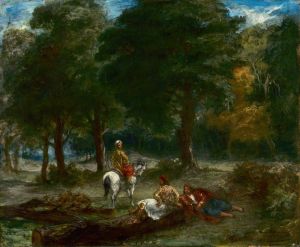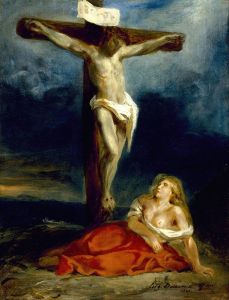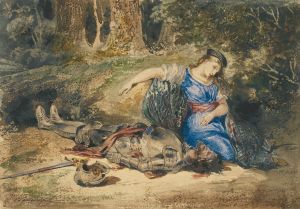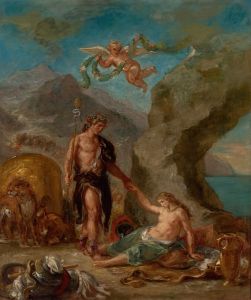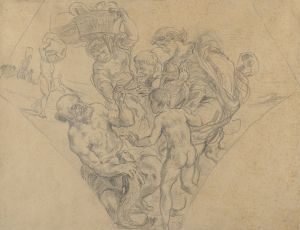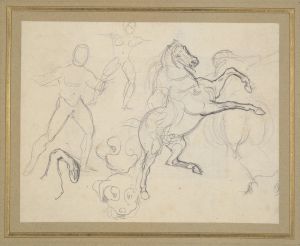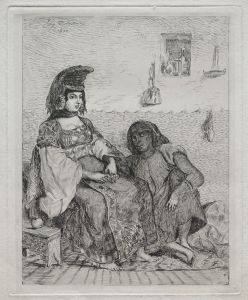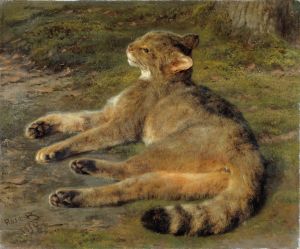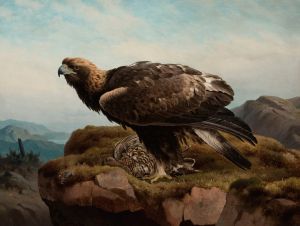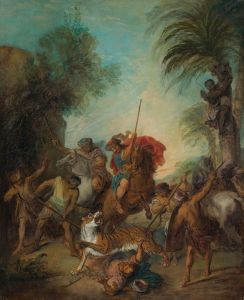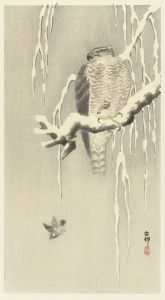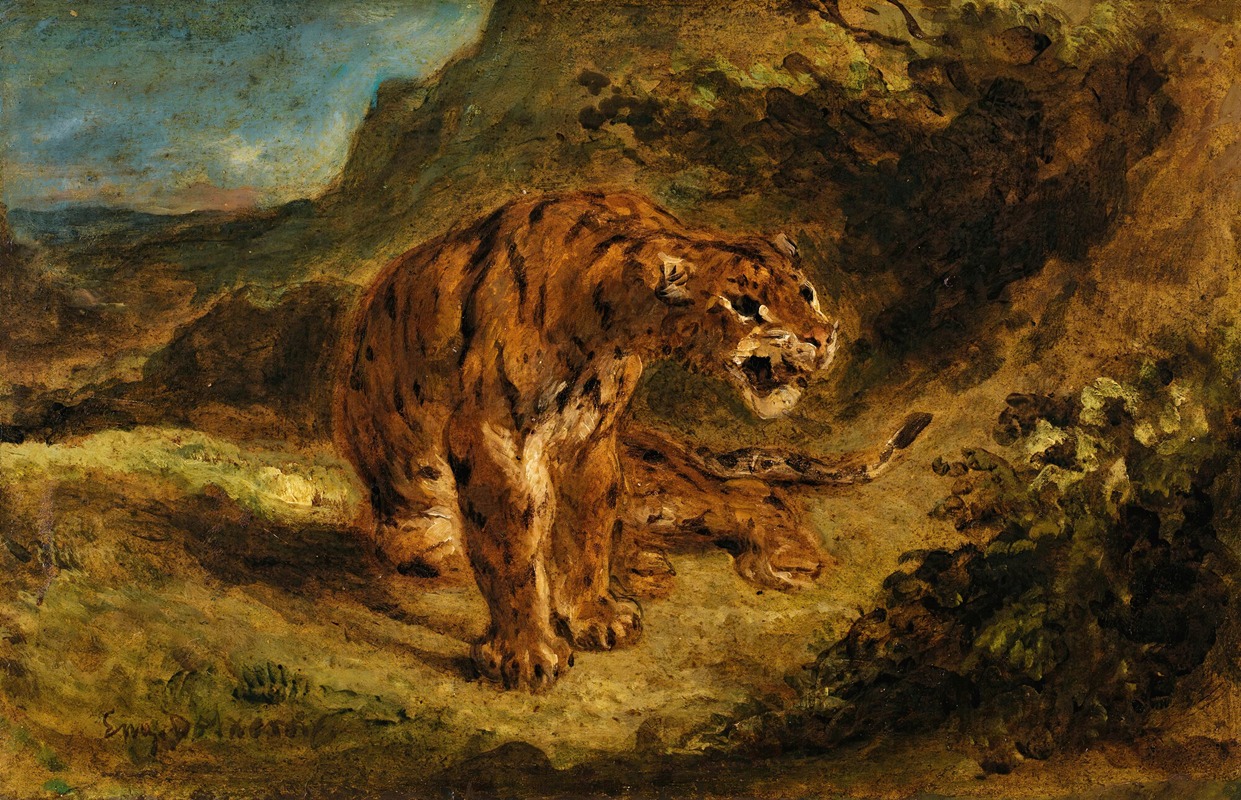
Tiger On The Look-Out
A hand-painted replica of Eugène Delacroix’s masterpiece Tiger On The Look-Out, meticulously crafted by professional artists to capture the true essence of the original. Each piece is created with museum-quality canvas and rare mineral pigments, carefully painted by experienced artists with delicate brushstrokes and rich, layered colors to perfectly recreate the texture of the original artwork. Unlike machine-printed reproductions, this hand-painted version brings the painting to life, infused with the artist’s emotions and skill in every stroke. Whether for personal collection or home decoration, it instantly elevates the artistic atmosphere of any space.
"Tiger On The Look-Out" is a painting by the renowned French Romantic artist Eugène Delacroix. Delacroix, born on April 26, 1798, and passing on August 13, 1863, is celebrated for his vibrant use of color and expressive brushwork, which significantly influenced the development of both Impressionism and Post-Impressionism. His works often depict dramatic and exotic subjects, and "Tiger On The Look-Out" is no exception.
This painting exemplifies Delacroix's fascination with the animal kingdom, a theme he explored throughout his career. Delacroix was known for his keen interest in the natural world, and he often visited zoos and studied animals to capture their essence in his art. "Tiger On The Look-Out" reflects this interest, showcasing his ability to portray the dynamic and powerful presence of wild animals.
The painting features a tiger, a subject that Delacroix returned to multiple times, reflecting the Romantic era's fascination with the exotic and the untamed. The tiger is depicted in a moment of alertness, its body tense and ready, capturing the viewer's attention with its intense gaze. Delacroix's use of color and light in this painting is particularly notable; he employs a rich palette to bring the scene to life, emphasizing the tiger's majestic and formidable nature.
Delacroix's technique in "Tiger On The Look-Out" demonstrates his mastery of color and movement. The brushwork is fluid and dynamic, conveying the energy and grace of the tiger. This approach is characteristic of Delacroix's style, which often prioritized emotion and movement over precise detail. The background of the painting is typically less defined, drawing focus to the central figure of the tiger and enhancing the sense of immediacy and tension in the scene.
The Romantic movement, of which Delacroix was a leading figure, often emphasized emotion, individualism, and the sublime aspects of nature. "Tiger On The Look-Out" embodies these themes, presenting the tiger not just as an animal but as a symbol of the wild and untamed forces of nature. Delacroix's work often sought to evoke an emotional response from the viewer, and this painting is no exception, inviting contemplation of the beauty and power of the natural world.
While specific details about the creation date and current location of "Tiger On The Look-Out" are not widely documented, Delacroix's animal paintings, including his depictions of tigers, remain influential. They continue to be studied for their innovative use of color and their role in the evolution of modern art. Delacroix's legacy as a pioneer of the Romantic movement and his impact on subsequent generations of artists is well established, with works like "Tiger On The Look-Out" contributing to his enduring reputation.
In summary, "Tiger On The Look-Out" is a testament to Eugène Delacroix's skill in capturing the essence of his subjects through expressive color and dynamic composition. The painting reflects the Romantic fascination with the exotic and the powerful, showcasing Delacroix's ability to convey emotion and movement in his art.







